Green River Formation Fossil Collecting
American Fossil Quarry in Kemmerer, WY, July 25-26
In my ongoing quest to collect and document the last remaining Public Fossil Collecting Sites for the American Fossil Hunt book and collecting guide, I crossed a big one off the list. After visiting Yellowstone National Park this summer, I made a trip to Wyoming to collect the famous American Fossil Quarry for 2 days. Here is a full, in-the-field report of what you can expect when collecting this quarry. I waited to post this because I wanted to finish prepping and sealing my finds, but just haven’t made the time to do so yet. I will save that for a winter project, and a later post.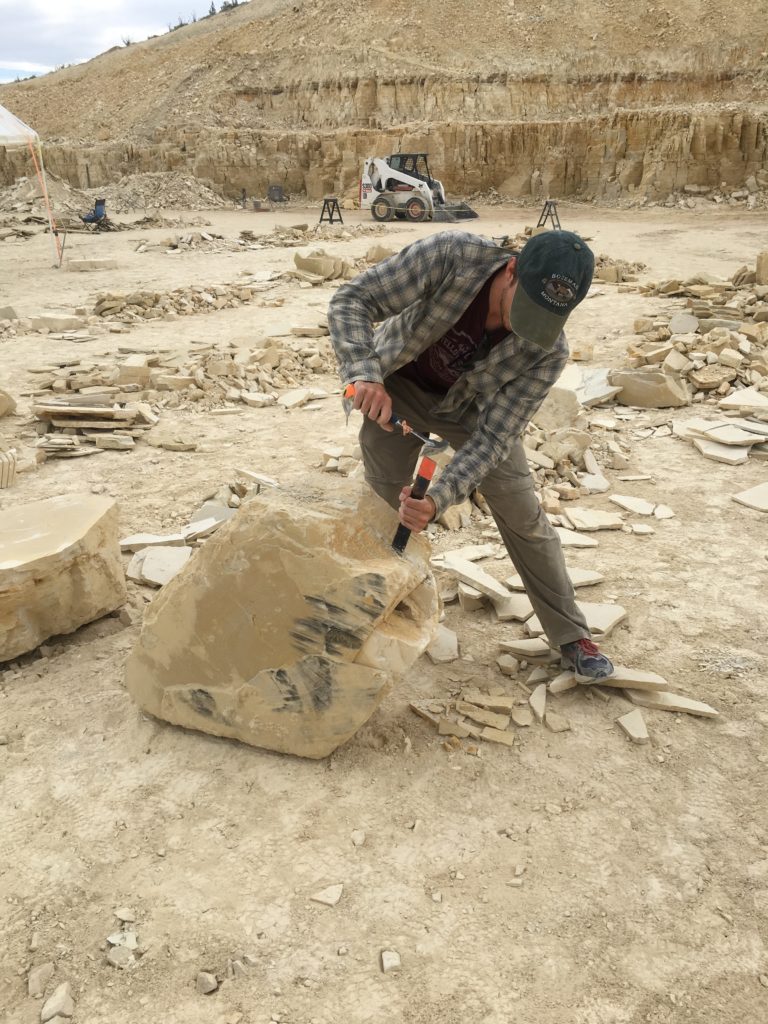
About the Green River Formation
During the Eocene, 50 million years ago, there was a large inland lake system that spanned across what is now Wyoming, Utah, and parts of Colorado. The lakes were in a sub-tropical climate and supported life of many species of fish, flora, reptiles, and mammals. As sediment filled in the lakes over a period of 5 million years, it covered dead plants, fish, and animals and preserved them as fossils with excellent detail. They can be found in museums across the world, with the Field Museum of Natural History in Chicago having an excellent collection and display. You can read more about the Green River Formation here.

The Quarries
There are a few quarries where Green River Formation fossils are found. Some are private and collected for commercial use or scientific research, and others are open to the general public, and you can collect for a reasonable fee:
American Fossil- http://www.fishdig.com/
Warfield Fossil Safari- http://www.fossilsafari.com/warfield/
Ulrich’s Fossil Quarry- http://www.ulrichsfossilgallery.com/quarry-tours/
A Visit to American Fossil Quarry
American Fossil is located in Kemmerer, WY. It is the only quarry where you can keep 100% of your finds, so long as its unprepared value is under $100,000. That means if you find something rare, like a stingray, turtle, or bat, you can go home with it. Other quarries have restrictions on vertebrates and rare finds, which was part of the reason I decided to spend my short trip at American Fossil.
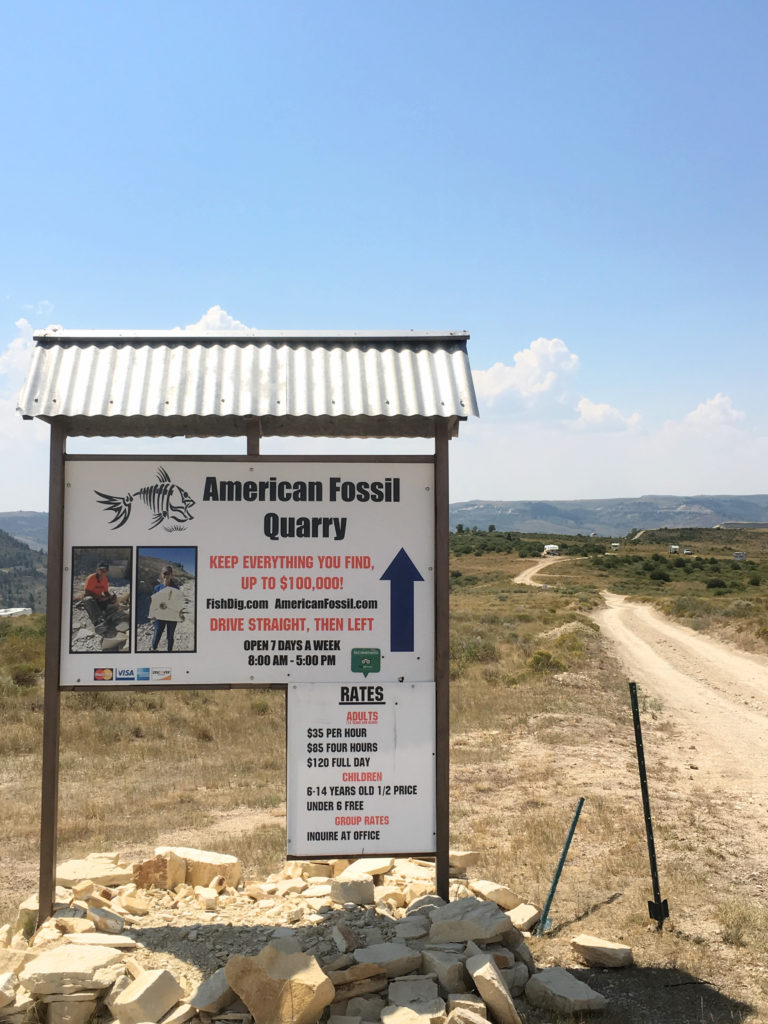 I met Patrick Hogle near downtown Kemmerer. He and a partner lease and run this quarry during collecting season. It is a short drive from town into the collecting area, and took about 15 minutes. Our arrival started with a short tour of the quarry, followed by a quick tutorial on how to split the rock.
I met Patrick Hogle near downtown Kemmerer. He and a partner lease and run this quarry during collecting season. It is a short drive from town into the collecting area, and took about 15 minutes. Our arrival started with a short tour of the quarry, followed by a quick tutorial on how to split the rock.
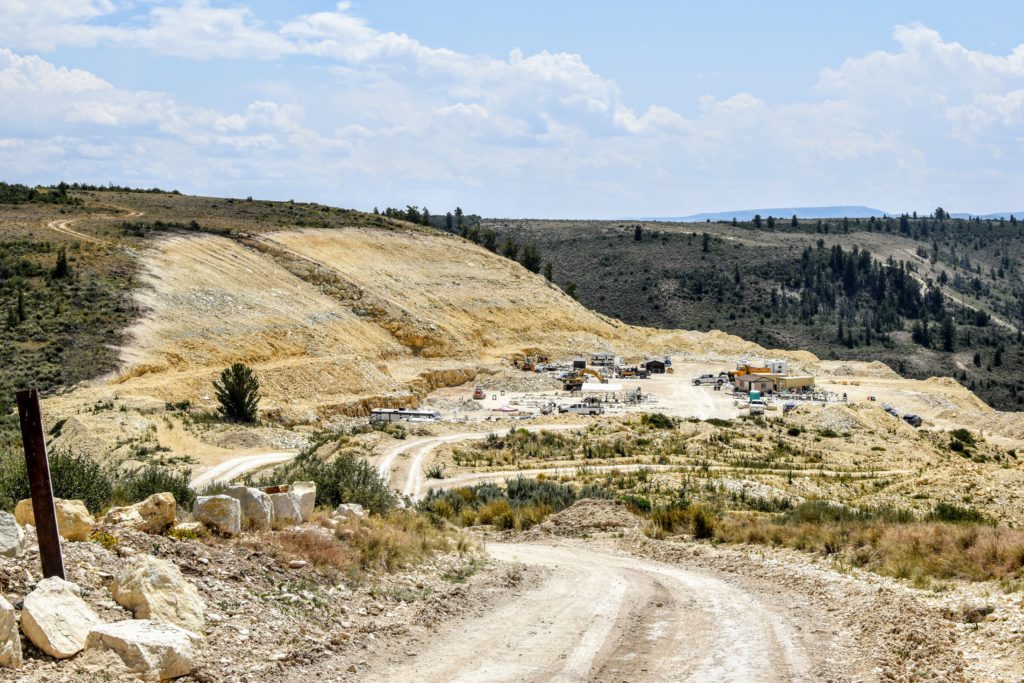
The shed, to the right in the picture above, holds a small gift shop, tools, and examples of common finds.
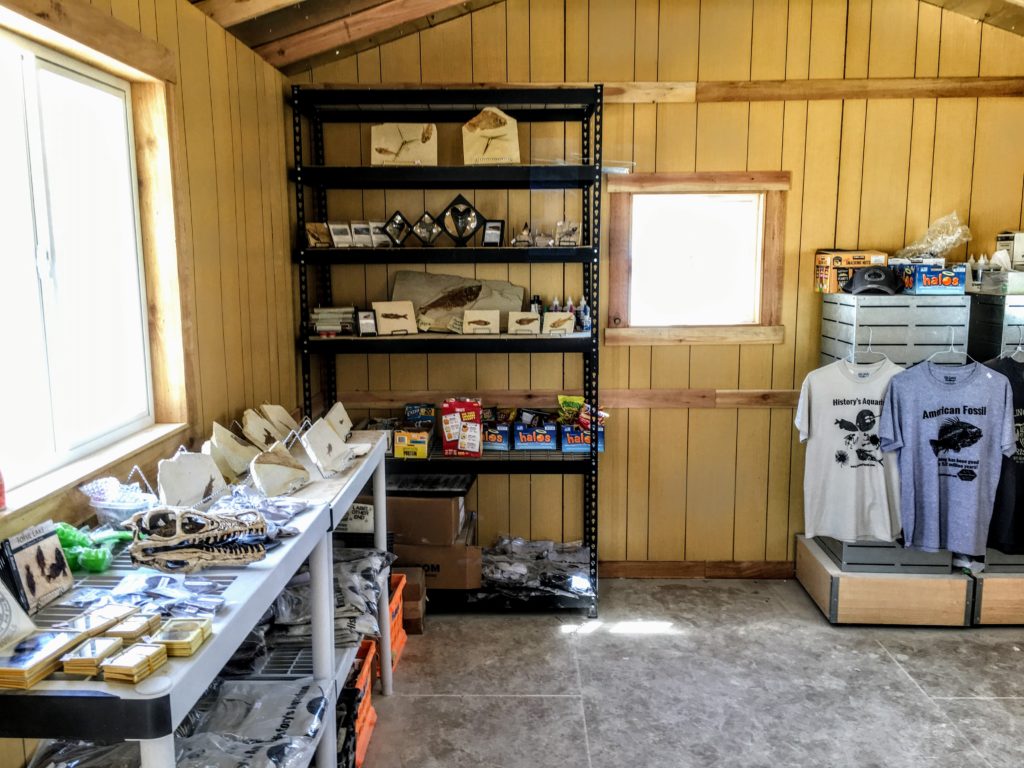
The Collecting Area
Each night, Patrick and his staff use some heavy construction equipment to strategically dig out sections of the wall of this quarry. They lay out this fresh rock in rows, arranged by section, for guests to dig through each day.
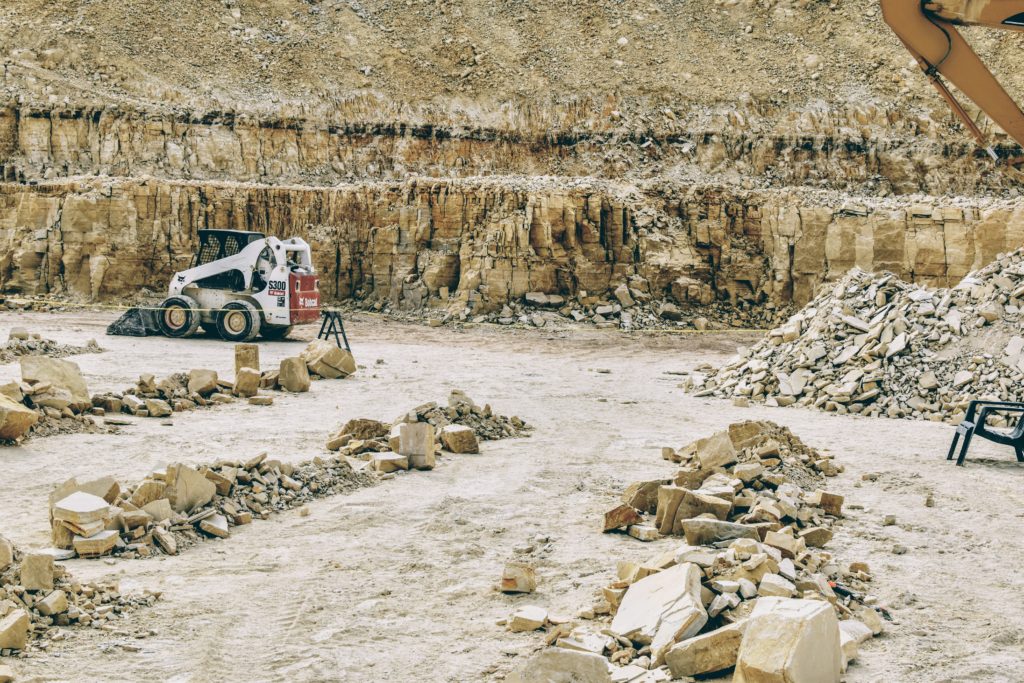
There were 2 types of rock lied out in the collecting area on the days I split. About half the rock was from above the ‘ash layer’, or a 1-2 inch thick layer of the wall about 5 feet off the ground that indicated significant volcanic activity in the period. There are no fossils in this layer, and the rock above was a lot harder to split. The rock from below this layer is a bit easier to open. The size of each rock varied a lot, just based on how they were taken from the wall. Some pieces were as small as a book, and some as large as a boulder.
The photo above shows about 1/3 of what was put out on the day that I collected. Believe it or not, about 15-20 other guests and myself for the day were able to crack through nearly all of it!
The finds were great! This was the first fish I found. Not the best quality, but the first is always noteworthy.

There is really no telling on what the rock holds until you split it. A 50 lb slab of rock might hold no fossils, while a palm-sized section might reveal a perfect fish. And that really is part of the addicting fun. It’s like playing nature’s scratch off lottery ticket. You could find a very rare, or even undiscovered, species of turtle worth $10,000 ,or you could go home with a few common fish and a great time. Just a few days prior, a guest was splitting rock in the ‘garbage pile.’ This is the pile of the thousands of pounds of rock near the tile saws and prep tables. The material has been split many times and is now ready to be dumped down the side of the cliff. In a few taps of a small rock that someone else had discarded, they uncovered a rare, and very well preserved, baby turtle. American Fossil posted it on their Instagram page–

To give a spoiler alert, beginners luck did not strike on this trip for me, and I did not find anything exceptionally rare. Though I will say that I went home with a very nice prehistoric aquarium. There were fossil fish everywhere. I can say it would be impossible for anyone to leave this quarry without a fossil knightia, Wyoming’s state fossil (pictured below).
 I did a lot of catch-and-release fossil fishing on my trip. The quality of each fossil varied from a dis-articulated shadow of a fish, to an excellently preserved specimen. I opted to keep only the latter. I am beginning to have too many projects and too little closet space to hoard partial specimens anymore. Plus, I traveled by plane, and couldn’t carry much back. American Fossil has a service where they will mail your finds to you. After about a week to let the rocks dry and set, Patrick will carefully pack it up in a flat-rate mail box and send your finds after you return home.
I did a lot of catch-and-release fossil fishing on my trip. The quality of each fossil varied from a dis-articulated shadow of a fish, to an excellently preserved specimen. I opted to keep only the latter. I am beginning to have too many projects and too little closet space to hoard partial specimens anymore. Plus, I traveled by plane, and couldn’t carry much back. American Fossil has a service where they will mail your finds to you. After about a week to let the rocks dry and set, Patrick will carefully pack it up in a flat-rate mail box and send your finds after you return home.
I took a few of my more delicate finds back home in my carry-on bag. The one below was one of my favorite. I like the centered presentation of both the positive and negative fossil. It also opened in sort of a unique shape.
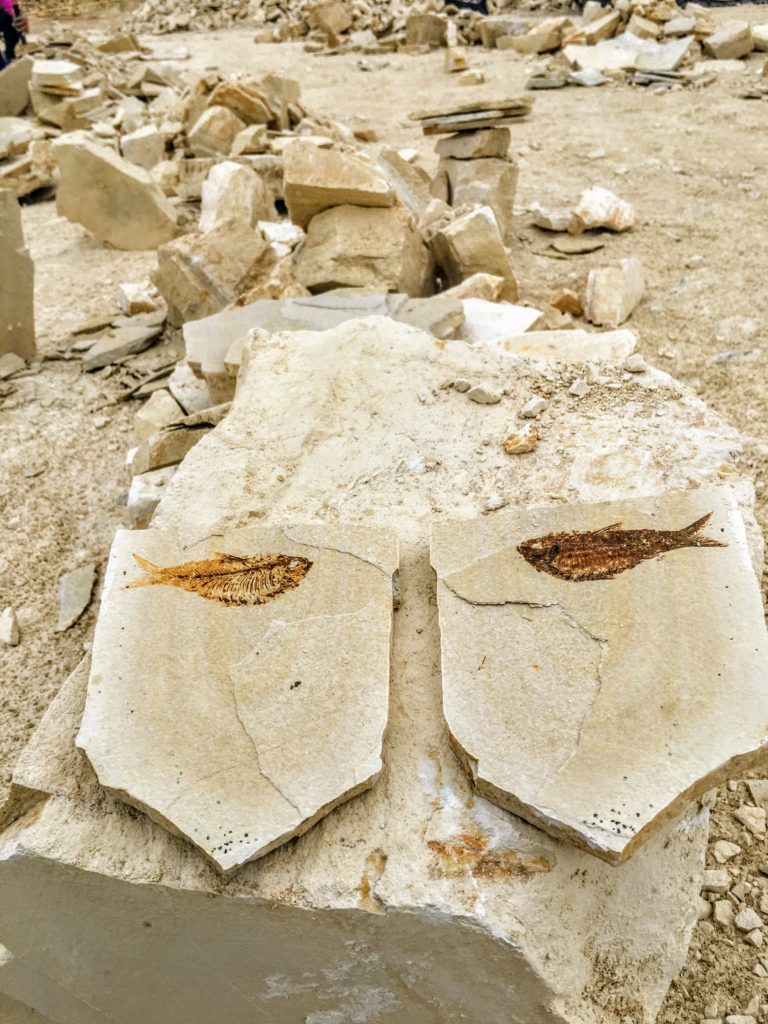
This one came home in my carry-on. I flew out of Salt Lake City International, and the funny and unfortunate thing is, my rocks (and a souvenir huckleberry candle), caught the attention of security and I had to do a near-full teardown of my gear. I had a lot of camping equipment too, and was packed pretty tight. So it took about 20 minutes to un-pack and re-pack the t-shirt-wrapped limestone bricks at the bottom of my bag. They knew what the fossils were, and apparently see them come up on the x-ray machine from time to time.
Below is another nice Knightia that I was able to cut out and take home.

The photo below shows a plate with some poorly-preserved fish. I opted to keep splitting the rock in hopes of a better find than these partial, and flaky, fish fossils. I am going to save a “Part 2” post to showcase some other areas of the quarry, pictures, and my finds.
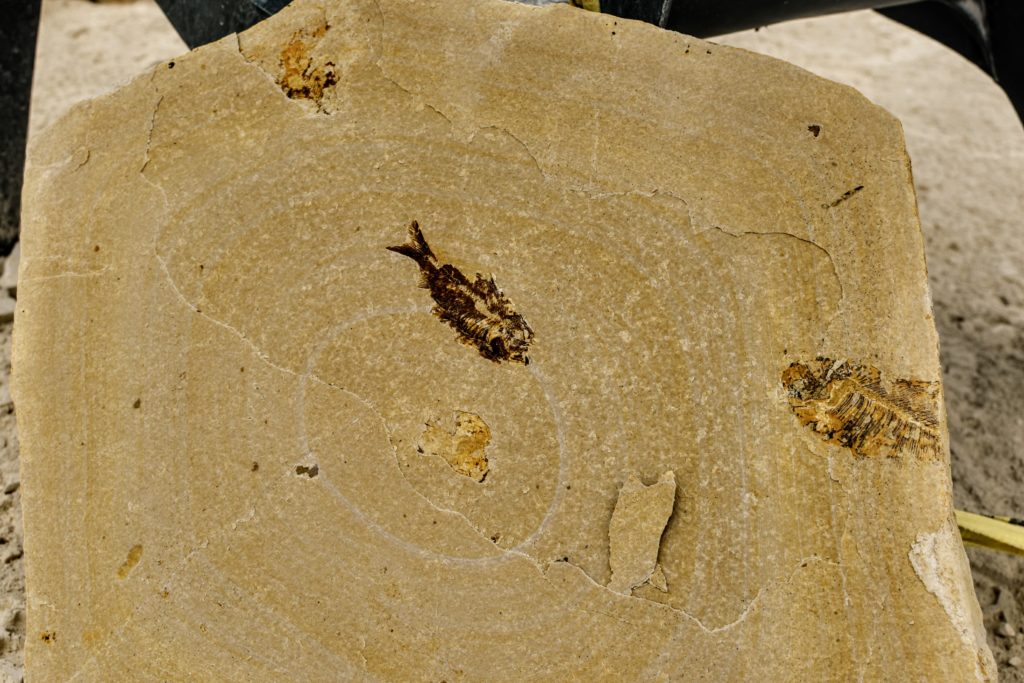
A Familiar Face
In a very serendipitous moment of the trip, I ran into a pair of friends who happened to be collecting on the same day that I was! I first met Judith via her instragram @judithberking after following for her great fossil and paleo art posts. We stayed connected, and about a year later she reached out about where to collect in Florida after seeing my post from the year prior. I happened to also be doing a 2nd trip down to Florida, and we timed out a collecting trip together. We booked a tour with Patrick at Fossil Funatics to all do some creek digging together. I was surprised to see them not even 8 months later at the quarry on the same day I was collecting! I do not think we could have coordinated it like this if we tried! I was coming from Yellowstone National Park, and they were heading that way on the next leg of their trip, and it’s amazing that our paths had crossed!
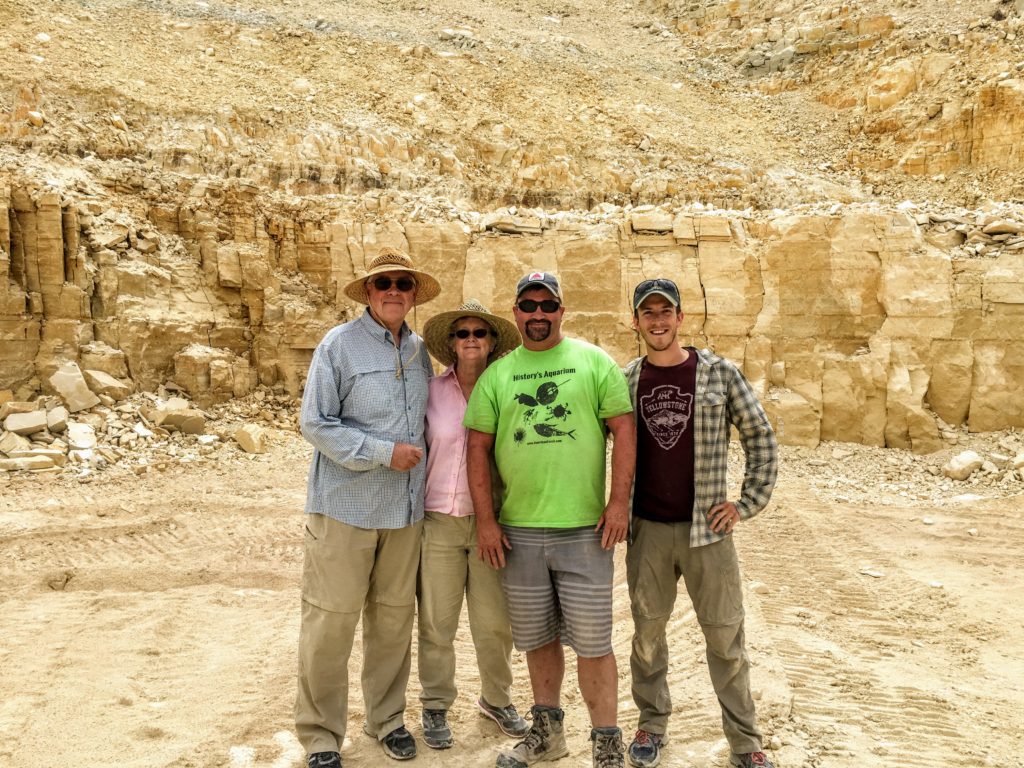
They also collected for 2 days, and had some great finds.

